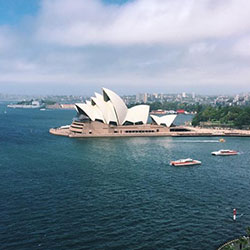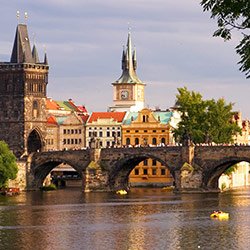Control of Aerospace Systems
Engineering & Social Sciences Program
Madrid, Spain
Dates: 1/19/23 - 6/3/23

Control of Aerospace Systems
OVERVIEW
CEA CAPA Partner Institution: Universidad Carlos III de Madrid
Location: Madrid, Spain
Primary Subject Area: Aerospace Engineering
Instruction in: English
Course Code: 15346
Transcript Source: Partner Institution
Course Details: Level 300
Recommended Semester Credits: 3
Contact Hours: 42
DESCRIPTION
1. Laplace transform
1.1. Definition
1.2. Properties
1.3. Inverse transform
2. System modeling: transfer function
2.1. Definition of the transfer function
2.2. Solution of the dynamics of a system through the transfer function
2.3. Limitations of the transfer function
3. System modeling: state space
3.1. Definition of the state space
3.2. Solution of the state equation
3.3. Cannonical forms of the state space
3.4. Transformation between state space and transfer function
4. Stability and feedback: systems characterization
4.1. Definition of stability for a dynamic system
4.2. Variables for the stability analysis of a dynamic system
5. Stability and feedback analysis in time domain
5.1. Definition of stability in the time domain
5.2. Methods for stability analysis in the time domain
6. Stability and feedback analysis in frequency domain
6.1. Definition of stability in the frequency domain
6.2. Methods for stability analysis in the frequency domain
7. Aircraft systems fundamentals
7.1. Control system for an aircraft
7.2. Sensors and actuators in an aircraft
7.3. Quality factors characterizing the aircraft dynamics
7.4. Properties of a control loop for the aircraft
8. Aircraft dynamics (I)
8.1. Longitudinal model of an aircraft
8.2. Longitudinal modes of an aircraft
9. Aircraft dynamics (II)
9.1. Lateral model of an aircraft
9.2. Lateral modes of an aircraft
10. PID controllers: design methods
10.1. Definition of a PID controller
10.2. Effects of the PID control actions
10.3. Desing of PID controllers: empirical and analytical methods
11. Nonlinear systems: describing function
11.1. Definition of the describing function
11.2. Characteristics of the describing function
12. Nonlinear systems: stability analysis (I)
12.1. Analysis of the stability of the nonlinear system by the describing function in the frequency domain
13. Nonlinear systems: stability analysis (II)
13.1. Analysis of the stability of the nonlinear system by the phase plane in the time domain
1.1. Definition
1.2. Properties
1.3. Inverse transform
2. System modeling: transfer function
2.1. Definition of the transfer function
2.2. Solution of the dynamics of a system through the transfer function
2.3. Limitations of the transfer function
3. System modeling: state space
3.1. Definition of the state space
3.2. Solution of the state equation
3.3. Cannonical forms of the state space
3.4. Transformation between state space and transfer function
4. Stability and feedback: systems characterization
4.1. Definition of stability for a dynamic system
4.2. Variables for the stability analysis of a dynamic system
5. Stability and feedback analysis in time domain
5.1. Definition of stability in the time domain
5.2. Methods for stability analysis in the time domain
6. Stability and feedback analysis in frequency domain
6.1. Definition of stability in the frequency domain
6.2. Methods for stability analysis in the frequency domain
7. Aircraft systems fundamentals
7.1. Control system for an aircraft
7.2. Sensors and actuators in an aircraft
7.3. Quality factors characterizing the aircraft dynamics
7.4. Properties of a control loop for the aircraft
8. Aircraft dynamics (I)
8.1. Longitudinal model of an aircraft
8.2. Longitudinal modes of an aircraft
9. Aircraft dynamics (II)
9.1. Lateral model of an aircraft
9.2. Lateral modes of an aircraft
10. PID controllers: design methods
10.1. Definition of a PID controller
10.2. Effects of the PID control actions
10.3. Desing of PID controllers: empirical and analytical methods
11. Nonlinear systems: describing function
11.1. Definition of the describing function
11.2. Characteristics of the describing function
12. Nonlinear systems: stability analysis (I)
12.1. Analysis of the stability of the nonlinear system by the describing function in the frequency domain
13. Nonlinear systems: stability analysis (II)
13.1. Analysis of the stability of the nonlinear system by the phase plane in the time domain







